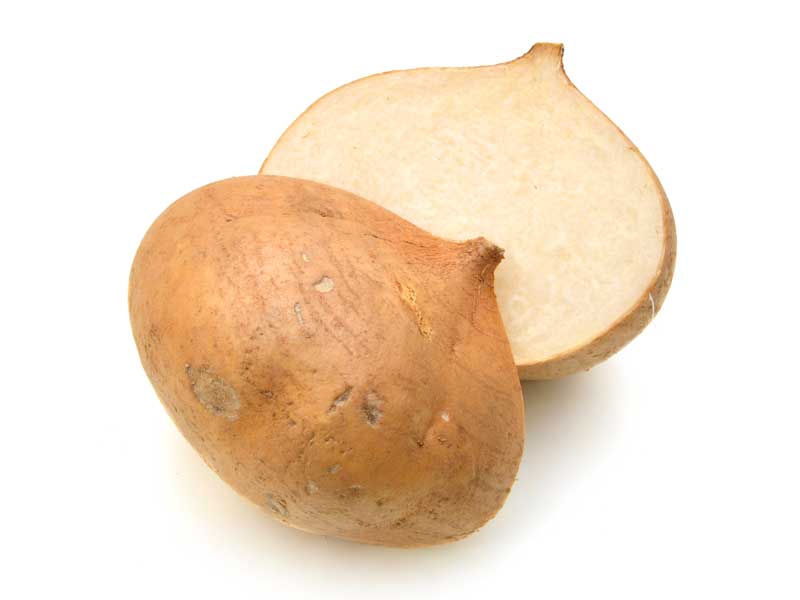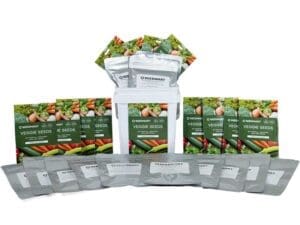VEGETABLE ‘Yam Bean (Jicama)’ Seeds
Botanical Name: Pachyrhizus erosus
- Delicious root vegetable with crisp, juicy flesh and mildly sweet, nutty flavour.
- Perfect raw in salads, grated into slaws, or added to stir-fries.
- Produces large, round roots rich in vitamin C and dietary fibre.
- Lush, vigorous vines grow up to 2–3 m with support.
- Thrives in warm, sunny climates with well-drained soil.
- Important: Leaves and seeds are toxic and should not be consumed.
Plant Details
- Plant Type: Annual root vegetable
- Plant Height: Vines 2–3 m when mature with trellis or support
Sowing Information
- Germination: 10–14 days (optimal soil temperature 18–30°C)
- Depth: 2–3 cm deep
- Position: Full sun
- Sow Where: Directly into garden beds or large containers
- Soil Type: Rich, well-drained soil with pH 6.0–7.5; incorporate compost before planting
- Spacing: 30–50 cm between plants, rows 60–75 cm apart
Growing Tips
- Provide a strong trellis or support for climbing vines.
- Water consistently to maintain even moisture, especially during early growth.
- Fertilise every 4–6 weeks with a balanced organic fertiliser.
- Harvest roots when firm and mature; avoid damaging them when lifting.
- Do not eat leaves or seeds—only the roots are edible.
Harvest
120–150 days after sowing. Harvest when roots are large, firm, and crisp.
When to Sow Yam Bean in Your Climate
| Climate Zone | Best Planting Time | Tips |
|---|---|---|
| Temperate | Spring–Summer | Sow after last frost when soil is warm. Provide trellis support early. |
| Subtropical | Spring–Summer | Plant during warm months. Water consistently to encourage large roots. |
| Tropical | Year-round | Best in the dry season. Avoid waterlogging during heavy rains. |
| Cool | Spring–Summer (after frost) | Sow in late spring once the danger of frost has passed. |
| Arid | Spring–Summer | Sow early in the season. Mulch to retain soil moisture. |




